The Hawaiian baby woodrose (Argyreia nervosa) is a perennial climbing vine, also referred to as the wooly morning glory or elephant creeper. It’s part of the Morning Glory or Convolvulaceae family, and native to southern India but can now be found in many areas, especially tropical areas. It’s known for its psychoactive effects and potential medicinal properties.
The Hawaiian baby woodrose is also known as the woolly morning glory or elephant creeper. It’s a woody perennial vine with large, cordate (heart-shaped) leaves—the leaves may measure up to 30cm across, and are roughly as long as they are wide. Leaves are also glabrous (hairless) above and white-tomentose (silvery, hairy) on their undersides.
A mature baby woodrose vine may reach 9m or more in height—such specimens are often many years old, however, as it’s a slow-growing species that often takes over two years to reach just 30cm in height. This contrasts with the related Convolvulaceae species, Mexican morning glory (a well-known source of LSA, and the species that is often simply termed ‘morning glory’ as it’s considered so ubiquitous and representative of the family).
The flowers of the baby woodrose are trumpet-shaped and bisexual, measuring around 5cm across and expressing a range of pigments, from whitish-pink to deep bluish-violet. The flowers die off to reveal the characteristic seed pods for which the plant is commonly named. These pods are round, woody capsules, surrounded by five-petal calyxes, which have the overall appearance of small roses carved from wood. There are four to six hard, brown seeds per pod and seeds often have a furry, mould-like coating, depending on variety.
Cultural & traditional use of Hawaiian baby woodrose
In Hawaii, the baby woodrose has reportedly been used for thousands of years as a cheap alternative to cannabis and alcohol, as well as having some religious and spiritual significance. It’s believed that—almost uniquely among plant hallucinogens—the Hawaiian baby woodrose was not widely known as an entheogen until the 1960s, subsequent to research on related morning glories.
Outside of Hawaii, baby woodrose has been cultivated for hundreds, if not thousands of years—if not for entheogenic purposes, certainly for medicinal and ornamental ones. Indian Ayurvedic medicine makes use of baby woodrose as a treatment for elephantiasis, and to treat rheumatism.
In India, traditional names for baby woodrose include bastantri (Sanskrit) and samandar-ka-pat (Hindi). Some have even postulated the baby woodrose as a potential candidate for the legendary soma, a plant referred to repeatedly in the Rigveda (one of the four ancient Sanskrit texts, the Vedas, which are sacred in Hinduism).
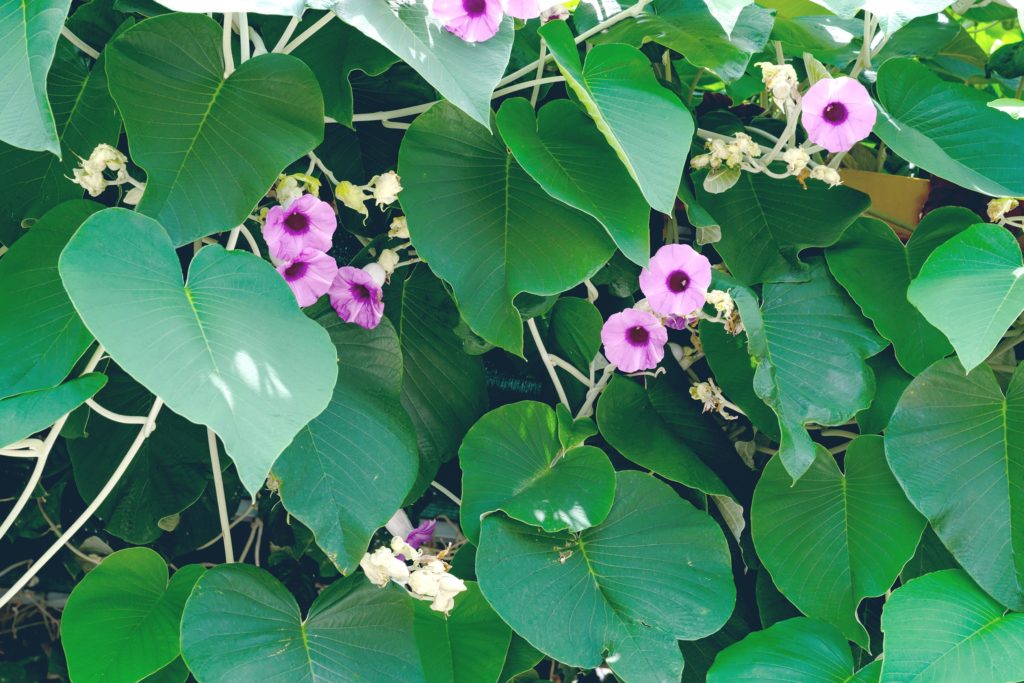
Distribution & habitat
Despite its name, the baby woodrose isn’t native to Hawaii – it was something that must have been introduced to the area, along with many areas in Africa and the Caribbean. It’s actually indigenous to the Indian subcontinent. It’s also found in Australia, the Malay Peninsula and China, as well as many other locations in the region, and is believed to have escaped from cultivation in most instances.
The baby woodrose prefers tropical or subtropical climates, and will thrive in protected, sunny spots with moist, fertile soil and good drainage. It’s able to germinate easily under thick forest canopy or dense grass cover due to its nature as a climbing plant.
There are two subspecies of baby woodrose: A. nervosa var. nervosa and A. nervosa var. speciosa. The latter has no psychoactive properties, but the roots and leaves are used in Indian Ayurvedic medicine as a treatment for erectile dysfunction, syphilis, diabetes, and many other complaints, particularly those related to the digestive system.
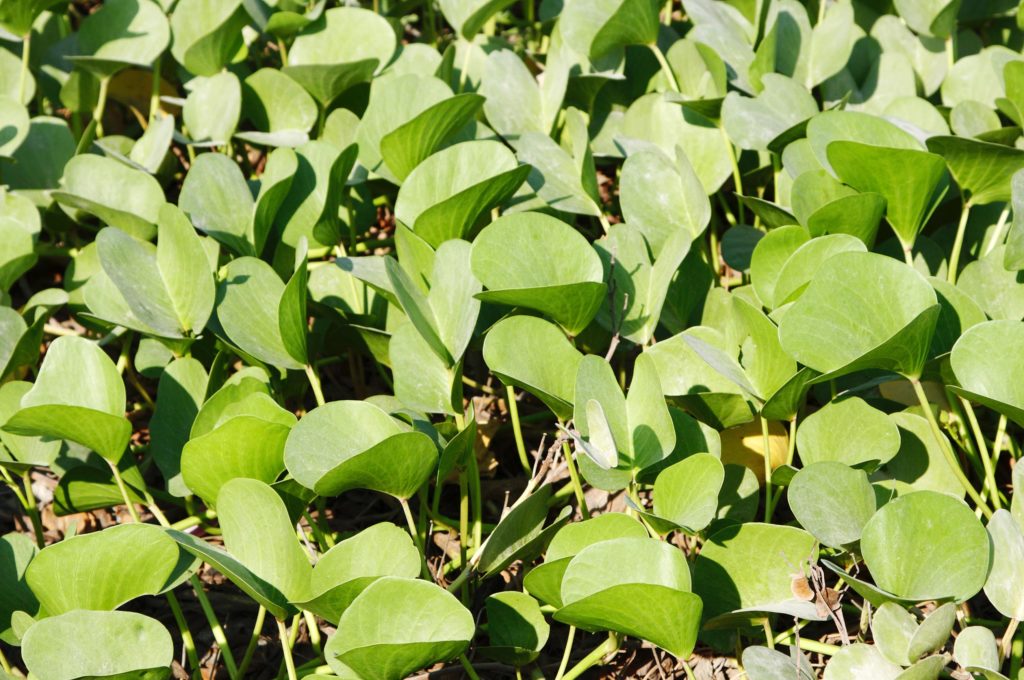
How Hawaiian baby woodrose is cultivated
Baby woodrose is typically propagated through use of scarified seeds or cuttings. Seeds are first scarified (lightly scored with a sharp, clean blade) and then soaked for 24 hours to induce germination. The seeds or cuttings are sown at least 1.5m apart to allow the extensive root systems sufficient space to develop. Use of support structures is necessary so that the vine can climb; a trellis, wall or tree is the most common solution.
Baby woodrose is planted in the late spring or early summer, and should be frequently but lightly watered with plain, unfertilised water. High-nitrogen fertilisers should not be used, as these can encourage excess leaf production and reduce flower formation. Instead, a bloom-boosting fertiliser should be used just once per month to encourage the flowers that will ultimately yield the desired seed pods.
Once the vines have reached a sufficient level of maturity, they’ll begin to put out flowers. This usually occurs in the spring and summer following initial planting, after the vines have had almost a full year of growth. Some varieties may need at least two or three years before yielding a substantial harvest; even then, if environmental conditions are less than optimum flower formation will not be vigorous.
Purchasing Hawaiian baby woodrose seeds
There are many different varieties of baby woodrose, and the concentration of alkaloids may vary widely. Some varieties contain little to no LSA, others have very high concentrations—hence, the number of seeds needed for a full dose may vary greatly between varieties.
The seed produced in India and Africa is mainly of the A. nervosa var. speciosa variety and contains little to no LSA. A. nervosa var. nervosa varieties are also grown in these locations, but are usually lower in alkaloid concentration than those cultivated in Hawaii.

Although nervosa seeds are mainly produced in Hawaii, small-scale cultivation also occurs in northern Australia. Nervosa seeds are usually higher in price than speciosa and are not as abundant on the global market. For this reason, some unscrupulous seed suppliers may sell speciosa seeds as nervosa. I If planning a purchase, be sure to read consumer forums and reviews to get advice on reputable suppliers.
If purchased online, seeds should be checked for quality and freshness—there are several tell-tale signs to look out for that inexperienced users may not be aware of. Healthy seeds should be dark chocolate-brown, irregularly-shaped, and measuring between 2.5mm and 5mm in diameter. African seeds are smooth-surfaced and much paler than Hawaiian; Indian 87 seeds are larger and more oval in shape, and Indian nervosa seeds are smaller and less fuzzy.
Effects & pharmacology of Hawaiian baby woodrose
Baby woodrose is known for producing a dream-like ‘trip’ that can last up to eight hours, with a further twelve hours of relaxed, tranquil sensations. Hallucinations are less intense—and less common—than with LSD, and side-effects may include nausea and other stomach complaints. These side-effects are more common with whole seed than with extracts.
The seeds of the Hawaiian baby woodrose contain the ergoline alkaloids ergonovine and ergine. Ergine is also referred to as LSA (lysergic acid amide), and is of particularly close chemical similarity to lysergic acid diethylamide (LSD). Ergonovine (also known as ergometrine) and LSA are both precursors to LSD and are controlled substances in several countries.
Ergoline alkaloids are thus named as they are also found in ergot fungi—parasitic species of fungi that infect rye and similar grains. This fungi has been implicated in outbreaks of mass hallucination or hysteria at various points throughout the history of settled agriculture.
LSA & ergonovine
Ergonovine has several medicinal uses, which are thought to arise from its capacity to cause vasoconstriction (narrowing of the blood vessels). When used as an adjunct with oxytocin, it reduces the risk of post-partum haemorrhage; it can also be used to induce spasm of the coronary arteries in sufferers of Prinzmetal’s angina and is a useful tool for diagnosis.
When administered in doses significantly larger than those used medicinally (2-10mg compared to 0.2-1mg), it’s believed that ergonovine may have psychedelic properties.
LSA is the most well-known compound found in baby woodrose seeds; each seed contains around 10µg, around 0.13% of overall dry weight. When eaten whole, not many seeds are required to experience any psychoactive effects. Caution should be exercised when consuming whole seeds, as ascertaining precise dosages is impossible. This is a rough guide for dosage:
Threshold: 1 – 3 seeds
Light: 3 – 5 seeds
Common: 5 – 7 seeds
Strong: 7 – 12 seeds
Heavy: 12 seeds +
LSA has similar effects to LSD, but is far less psychedelic, and can be sedating in larger doses. Users report experiencing a dream-like state, in which consciousness is fully maintained; hallucinations are rare, but may occur at lower doses. LSA and ergonovine are both weak agonists of the dopamine type-2 receptor, as is common among plant-derived alkaloids.
How Hawaiian baby woodrose is prepared
Often, users of baby woodrose will consume the seeds whole, without any form of processing—although it’s recommended to scrape or gently burn off the furry seed-coating before consumption. This step may also remove chemical treatments present on the seed; however, it’s highly advisable to source seeds which are entirely untreated.
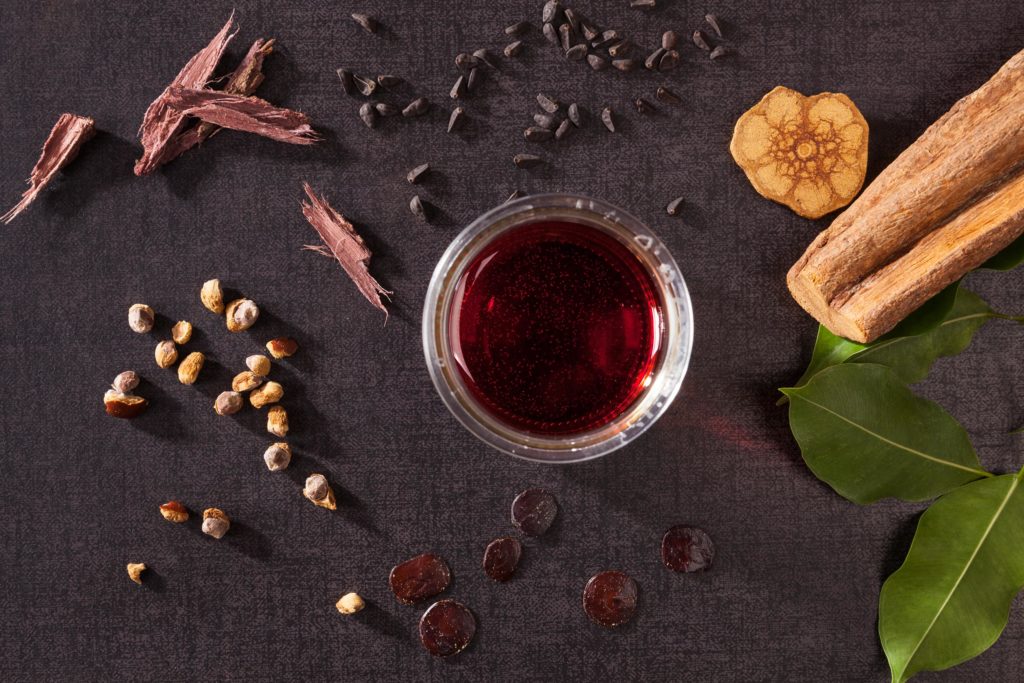
Those wishing to maximise efficiency and speed of delivery—or to minimise the risk of nausea and stomach cramps—may follow one of several techniques.
To increase the absorption rate of the active compounds contained within the seeds, a common technique involves first removing the husks, before crushing the seeds with scissors or a coffee grinder and steeping them in hot (but not boiling) distilled water. By the time the water reaches room temperature, the alkaloids contained within the seeds dissolve and can be drunk along with the water and seeds.
With this technique, there are additional tweaks that can be performed to decrease the nausea-inducing side-effects. For example, garlic can be added to the solution, stirred well, and left for thirty minutes. Garlic contains sulphur that reacts with compounds in the baby woodrose and negates its nauseating effects. Various flavourings may also be added to disguise the bitter taste of the solution.
LSA solvent extraction
If full extraction of the LSA is desired, without retention of the seeds’ vegetative material, this method can be utilised. The procedure requires both a non-polar solvent (petroleum ether is, although volatile, safer than toxic alternatives such as benzene) and a polar solvent (pure ethanol, NOT denatured, is the best choice). Freshly ground seeds are steeped in the non-polar solution for several days; after this period, the solution (the liquid) is discarded and the residual seed material is retained.
The residue is dried fully to evaporate traces of the polar solvent. Then, the dry residue is steeped in the non-polar solvent for a day or two, and then filtered several times through coffee filters. This time, the solution is retained, and the residual material discarded. The polar solution is then left for several days, so the solvent can evaporate; a brownish, gummy paste will remain, which can be scraped up with a spoon or credit card and consumed as is.
While the Hawaiian baby woodrose is commonly enjoyed for its mind-altering, LSD-like experience, it also may hold many medicinal benefits as well. How it’s used and the dosage will have an impact on that experience and users should be aware of local laws on its use.
- Disclaimer:Laws and regulations regarding cannabis cultivation differ from country to country. Sensi Seeds therefore strongly advises you to check your local laws and regulations. Do not act in conflict with the law.







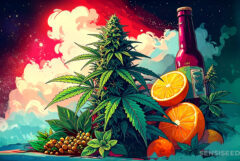
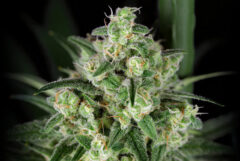
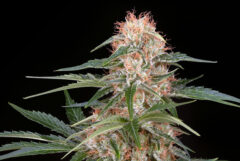


There are other extraction methods that use more natural ingredients. The same extraction process can be used for morning glory (heavenly blue variety), as you use for HBWR, the big difference is you only need a few HBWR seeds, & for morning glory, you need a few hundred seeds.
Good afternoon Katie,
Thanks for sharing information about the extraction process!
You might also enjoy our article on Salvia Divinorum 101: Use, Effects, History & Science
Have a great day!
Mark
I bought a small packet of four Woodrose seeds from Big Island Hawaii because I have fascinated by the dry wood roses! It’s quite amusing to read and discover from this website, that these seeds have hallucinating effects !
I live in India and am going to grow the seeds as an ornamental plant.
Your instructions are very clear and detailed but if there’s any further information you can give me the growth and care of wood roses, I will appreciate your response. Thank you.
How does the flowers get to be seeds? Do need to fertilize the flower?
Is there Male / Female flowers?
I see the flowers and no seeds are created from the flowers.
Good morning CK,
Thanks for your question,
The flowers of the Hawaiian Baby Woodrose are bisexual. Once the plant is coming to the end of its life cycle, the flowers die off to reveal the characteristic seed pods for which it is commonly named. These pods are round, woody capsules surrounded by five-petal calyxes. There are four to six hard, brown seeds per pod, and seeds often have a furry, mould-like coating, depending on the variety.
You might also enjoy our article on Salvia Divinorum 101: Use, Effects, History & Science.
Have a great day,
Mark
Once the flower blooms insects and other pollinators visit and pollinate it. The flowers contain both sexes, so as long as they are polinated the flower should dry up and drop off the plant and create seeds. Once the flower drops off that point the seed pod begins to grow. It takes about 4 weeks for the seed pod to fully mature. the seed pod will sit at the end of the stem where the flower once was.
If your flowers are not creating seeds, maybe they are not getting pollinated. Is your plant outdoors? It needs pollinators (inescts) to pollinate it.
I have a large wood rose that is very healthy and produces tons of flowers but we never get seeds…There a lot of pollinators around and I’ve even tried to hand pollinate but no luck. Ideas?
The LSA trip on HBWR is one of the best experiences I have had with a drug. Like with any other psychedelic, do not partake if you are not open to seeking or discovering hard truths within yourself and dealing with them.
Good morning Mel,
Thanks for sharing your experiences with Hawaiian Baby Woodrose with us – I’m glad you had a good trip 🙂
If you’re into natural psychedelics, this article on Salvia divinorum 101: use, effect, history & science may be of interest to you.
I hope you continue to enjoy the blog.
Have a good day,
Mark
Where can I buy real, authentic, quality, potent Hawaiian Baby Wood Rose Seeds.
The folks at HighZenBirds are awesome. They sell Organic, Untreated Hawaiian Baby Wood Rose , Argyreia Nervosa Nervosa (Hawaiian Strain) HBWR seeds as garden kits or sacred jewelry kits but they have T. McKenna’s strain from the Big Island.
Woah woah woah dangerous info here, noone should ever need “hundreds of seeds” for hbwr, you’re thinking morning glory. For hbwr 10 seeds is considered a heavy dose.
m.psychonautwiki.org/wiki/LSA
Hi Swim,
Thank you so much for pointing this out! I have now updated this article with the correct information. I hope you continue to enjoy the blog.
With best wishes,
Scarlet
Very informative and useful content
I Want seed of such plant .
Great posts! Thanks for such a very nice blog information, Thank you for telling more about this story. It’s really giving me lots of info for my working website and tips, big help for me.
I want to buy soon seeds we live in mission texas in the country zone 9
Hello Lynne,
Thanks for your comment. Unfortunately cannabis seeds cannot be legally sent to the US at the moment, we wish this was not the case!
With best wishes,
Scarlet
will hawaiian baby woodrose grow in trivandrum? where can i get good seeds from? I would like to have a few flowers for dry arrangements. is it available what will be the cost of a bunch